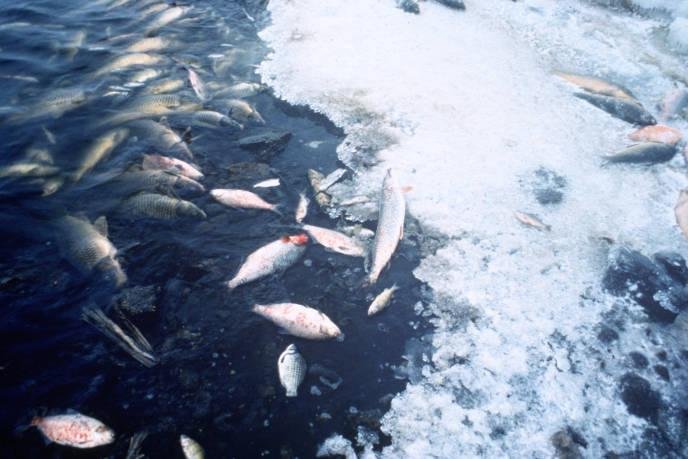Dead fish floating in the water in the wake of a fish kill. Photo by U.S. Fish & Wildlife Service.
BERKELEY, Calif., Jan. 14 (UPI) -- Hundreds of dead birds strewn across fields and washed up on beaches, dozens of dead fish floating downstream, tossed onto the banks of rivers, big and small -- these are the gruesome scenes scientists say are being witnessed more frequently as time goes on.
Mass die-offs of birds, fish and invertebrates are on the rise, researchers at the University of California, Berkeley say. The trends were borne out the first ever quantitative analysis of large scale animal deaths. Scientists plotted 727 mass die-off events over the past 70 years, involving a total of some 2,500 species (some events feature more than one species).
"This is the first attempt to quantify patterns in the frequency, magnitude and cause of such mass kill events," said lead study author Stephanie Carlson, an associate professor at Berkeley's Department of Environmental Science, Policy and Management.
The study found that roughly a quarter of all mass kills were a result of disease. Nearly 20 percent of die-offs happened as a result of environmental contamination. But the majority of the most severe die-offs could be blamed on a variety of stressors.
Fish-kills are more frequent in the summer, when drought and low water levels put pressure on local populations. As is the case with most any animal, when fish are under great environmental stress -- irregular habitat conditions, overpopulation, limited food supply, pollution exposure -- they are more susceptible to disease.
Global warming, diminished water supplies, and increased exposure to toxic contaminants are a few of the reasons why species may be increasingly vulnerable to mass die-offs over time.
Regardless of cause, the central trend is verifiable: mass die-offs are on the rise, increasing by one event per year for the last 70 years.
"While this might not seem like much, one additional mass mortality event per year over 70 years translates into a considerable increase in the number of these events being reported each year," explained co-author Adam Siepielski, a biologist at the University of San Diego. "Going from one event to 70 each year is a substantial increase, especially given the increased magnitudes of mass mortality events for some of these organisms."
The study was published this week in the journal PNAS.















